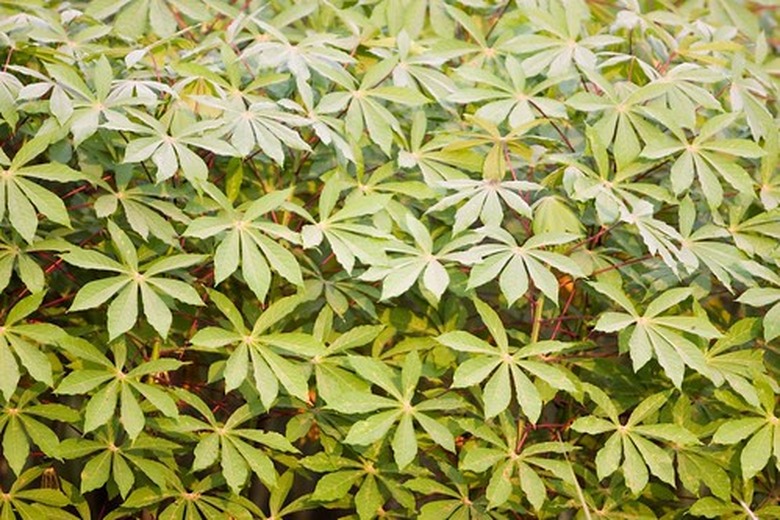Life Cycle Of A Cassava Plant
Cassava root, also known as yucca, tapioca or manioc, is the third most important carbohydrate in the world. Native to South America, it is a staple throughout the tropical and subtropical areas of South America, Africa, Asia and the Pacific Islands. Cassava root requires processing prior to consumption, to eliminate naturally occurring cyanide-producing compounds. Genetic engineering of cassava is ongoing, to reduce the risk of poisoning and to increase resistance to pests. Most cultures that consume the root also eat the leaves, which are a good source of protein.
Planting Season for Cassava
Cassava is planted as soon as the danger of frost ends, in areas where this is a problem. Otherwise, cassava may be planted at any time throughout the year. Cassava can be grown between 30 degrees north and south of the equator, at elevations of not more than 7,000 feet above sea level.
- Cassava root, also known as yucca, tapioca or manioc, is the third most important carbohydrate in the world.
- Cassava root requires processing prior to consumption, to eliminate naturally occurring cyanide-producing compounds.
Selection of Cassava Plant Starts
Cassava is grown from stem cuttings. These stem cuttings are sometimes referred to as "stakes." Only the healthiest, disease and pest-free stems are used. Stakes can be anywhere from less than three inches to almost a foot long. A longer stake is more sure to succeed, but the shorter length allows more stakes to be produced from the same stems. In either case, growers must make sure that at least two leaf nodes are present on each stake.
Planting Cassava Stakes
The cuttings are planted, usually by hand, in moist, prepared soil, burying the lower half. The original orientation of the stem must be observed, with the top of the cutting placed upward. If the soil is too shallow, the stake is laid flat and covered with about an inch of soil. Each stake is allowed about one square yard of space.
- Cassava is grown from stem cuttings.
- The original orientation of the stem must be observed, with the top of the cutting placed upward.
Cultivating Cassava
The stakes produce roots in a few days and new shoots grow from the stem's leaf nodes. Slow early growth means that weeding must be done for the first two to three months. Cassava is known for its hardiness in nutrient-poor, arid soils, but it does best in more fertile ground, and with regular irrigation. Take care to use fertilizers low in nitrogen, to prevent abundant leaf growth at the expense of smaller roots.
Harvesting Cassava
Cassava has no real "mature" stage; it is harvested when the roots reach the size desired by the grower. They need not be harvested all at once; roots left in the ground for up to three years will continue to enlarge, though their centers will become tough and woody. Leaves may be harvested throughout, as long as sufficient foliage is left in place to feed the roots.
- The stakes produce roots in a few days and new shoots grow from the stem's leaf nodes.
- Cassava has no real "mature" stage; it is harvested when the roots reach the size desired by the grower.

